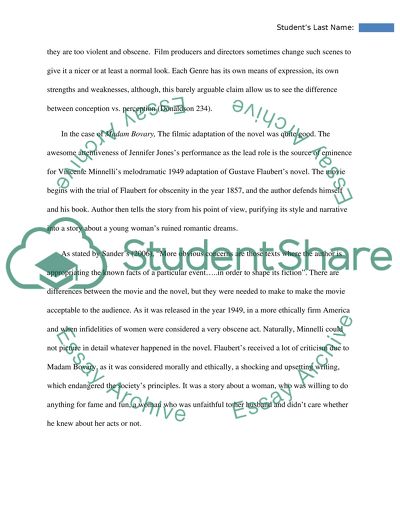Cite this document
(“Madame Bovary: From Book to Screen Essay Example | Topics and Well Written Essays - 2000 words”, n.d.)
Madame Bovary: From Book to Screen Essay Example | Topics and Well Written Essays - 2000 words. Retrieved from https://studentshare.org/english/1447256-the-ethics-of-adaptation
Madame Bovary: From Book to Screen Essay Example | Topics and Well Written Essays - 2000 words. Retrieved from https://studentshare.org/english/1447256-the-ethics-of-adaptation
(Madame Bovary: From Book to Screen Essay Example | Topics and Well Written Essays - 2000 Words)
Madame Bovary: From Book to Screen Essay Example | Topics and Well Written Essays - 2000 Words. https://studentshare.org/english/1447256-the-ethics-of-adaptation.
Madame Bovary: From Book to Screen Essay Example | Topics and Well Written Essays - 2000 Words. https://studentshare.org/english/1447256-the-ethics-of-adaptation.
“Madame Bovary: From Book to Screen Essay Example | Topics and Well Written Essays - 2000 Words”, n.d. https://studentshare.org/english/1447256-the-ethics-of-adaptation.


